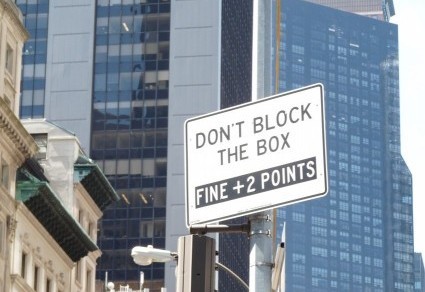In a previous post, “(Truly Real) Real Estate” (http://www.grammarianinthecity.com/?p=783), I went over the basics of how to speak the NYC dialect of Real Estate. I explain, for example, that “cozy” means small, and a “charming” apartment hasn’t been renovated in fifty years.
For anyone moving on to the intermediate level — perhaps members of Gen X, Y, or Z looking for a spot in one of the city’s boroughs, here’s lesson two. Similar dwellings move up the price-ladder in this order: “apartments” are cheaper than “residences,” which in turn cost less than “homes.” My personal favorite, “boutique,” is the most expensive. In the commercial market, the price of “an opportunity” is much more than what you shell out monthly to the landlord of a “store for rent.” Furthermore, assume that deadlines are open to interpretation:

I cut off the right side of the photo because I don’t like to give real phone numbers. I do like to give real dates, unlike the sign, which promises that the “residences” (price alert!) will be “Available Fall 2017.” I took the picture three days ago, in the spring of 2018. Judging from the scaffolding and debris scattered around, not to mention the “mandatory hard hat” sign, spring of 2019 is more likely.
And count on hyperbole. If a building is advertised as being “steps from Central Park,” the statement may be true only if you take about a thousand steps and have fairly long legs. (I actually saw this phrase on an ad for a building on my block, which is a brisk fifteen-minute walk from the park.) Another hyperbole: a “home” (price alert again) advertised as on the 20th floor may actually be much lower. If you’re in an elevator on the way to an open house, notice whether the buttons skip, say, floors seven through nineteen. Then do the math.
But those are minor quibbles. Anyone can be late or exaggerate, right? Redefinition, on the other hand, is another matter entirely. Take a look at this ad:

For readers who have lived only in houses, I should explain that a “studio” is a one-room apartment. Except if it’s the studio advertised on this sign, which somehow has “2 room.” The hyphen, by the way, is missing in the compound adjective, “two-room” or, in this sign, “2-room.” (It’s probably hiding, too embarrassed to be part of this ad.) The accompanying photo shows a large, bare room with no visible doors. Maybe they’re counting the bathroom as a room? Or they assume you can hang out in the basement with your bike, designating the storage area as a living room? Perhaps they believe you will pitch a tent in the “communal garden,” which, because we’re talking about New York City, could possibly have plants but may also be a patch of concrete without a roof.
Lesson for the NYC house hunter: learn to speak our real-estate dialect, and, as always, buyer beware.











 In my ignorance I was ready to impose an “unauthorized part of speech” penalty — until I looked up “creative” in the dictionary, which enlightened me to the fact that “creative” can be a noun applied to people who, well, create for a living: writers, artists, composers, and so forth. Apparently I’ve been a “creative” for decades and never knew it.
In my ignorance I was ready to impose an “unauthorized part of speech” penalty — until I looked up “creative” in the dictionary, which enlightened me to the fact that “creative” can be a noun applied to people who, well, create for a living: writers, artists, composers, and so forth. Apparently I’ve been a “creative” for decades and never knew it.













